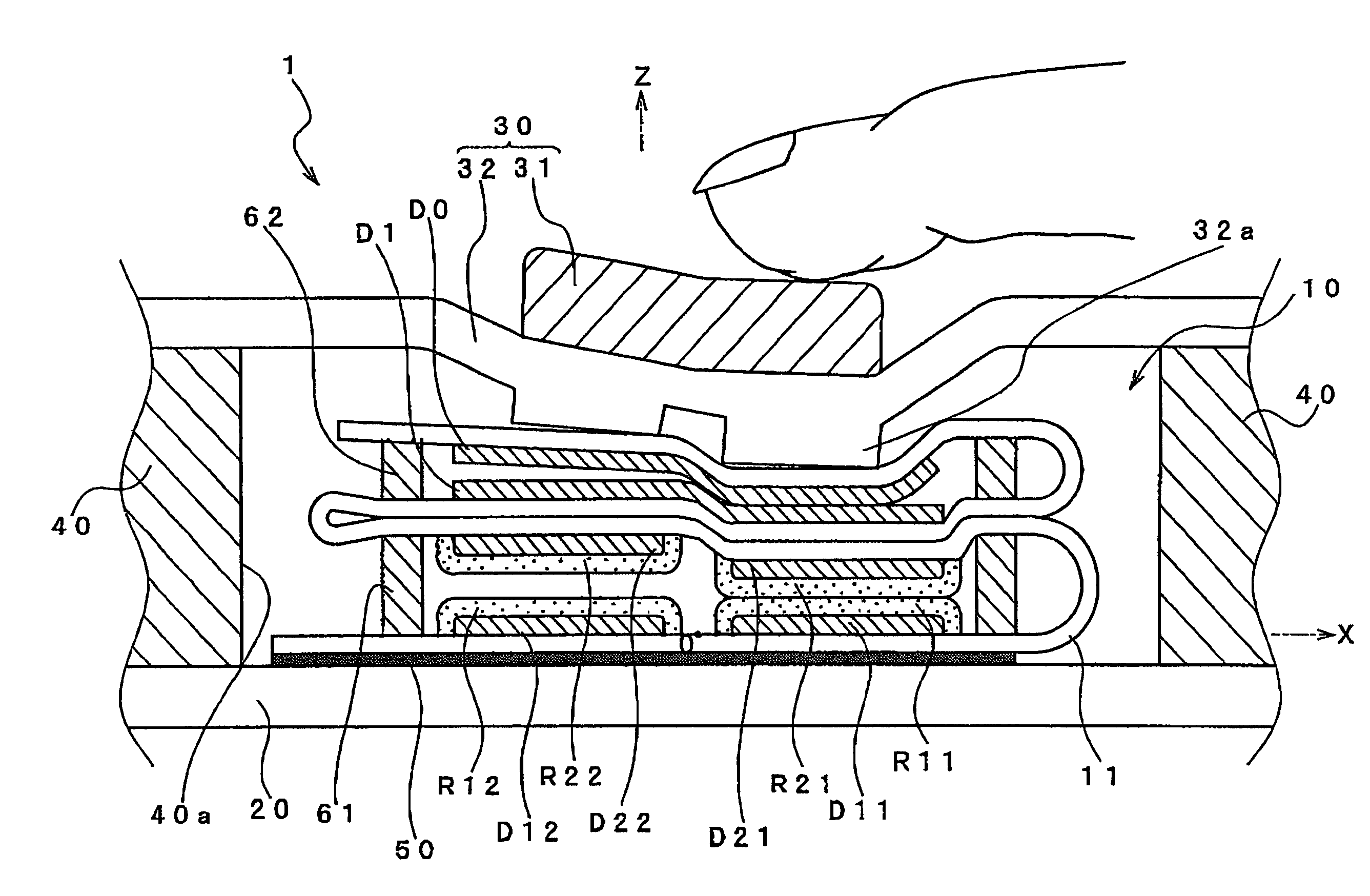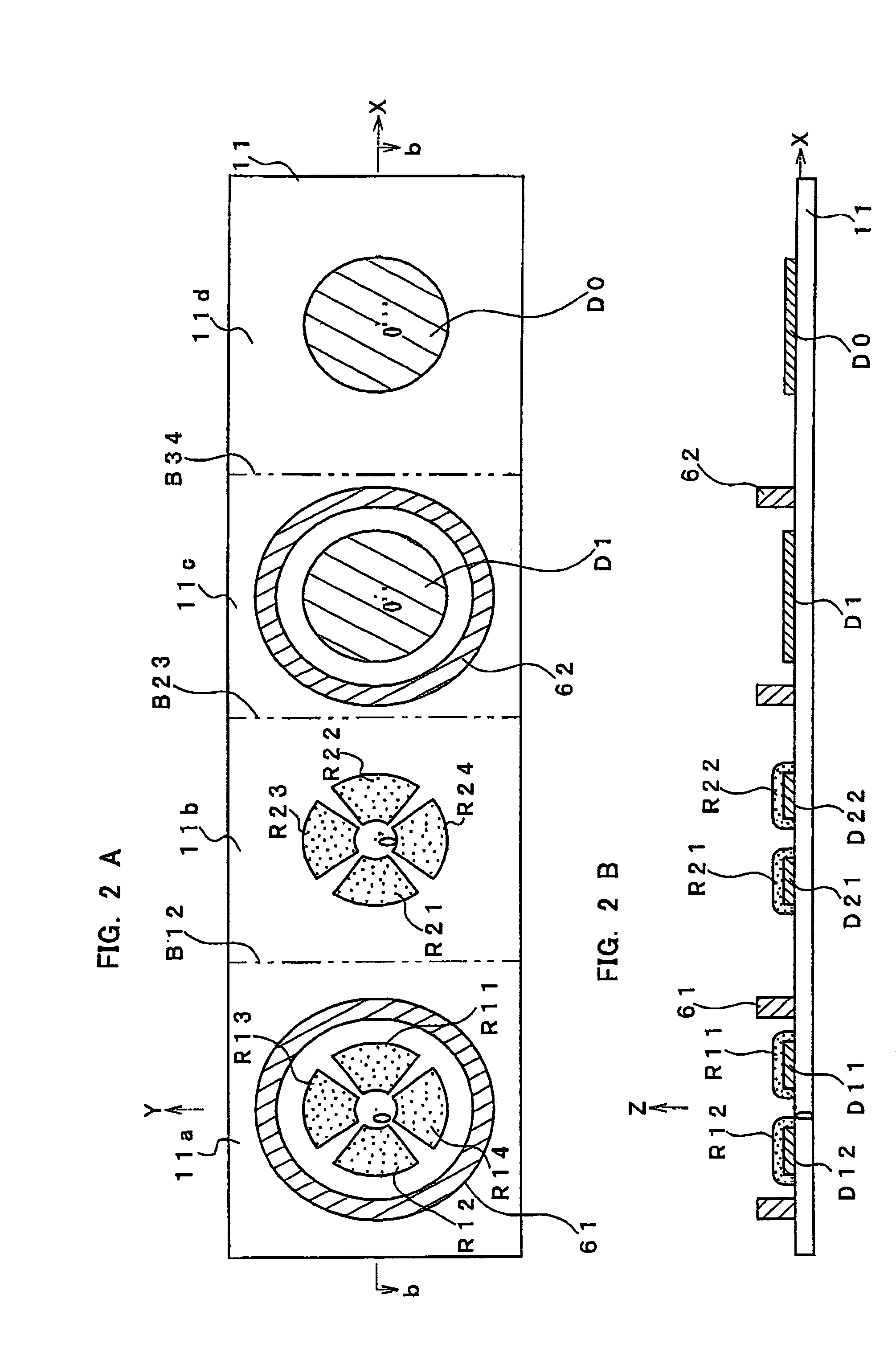Resistance type sensor
- Summary
- Abstract
- Description
- Claims
- Application Information
AI Technical Summary
Benefits of technology
Problems solved by technology
Method used
Image
Examples
first embodiment
[0111]Next, the construction of the resistance type sensor according to a variant of the present invention will be described with reference to the drawing. FIG. 9 is another example of the circuitry of the resistance type sensor according to the variant of the present invention.
[0112]The resistance type sensor according to th variant differs in the circuitry of the sensor circuit from the resistance type sensor of the first embodiment. As the remaining constructions are the same as those of the resistance type sensor 1 of FIG. 1, the description thereon will be omitted, with like numerals given to like parts.
[0113]In the circuit of the resistance type sensor according to this variant, one ends of the fixed resistances R10–R40 are held at the power-supply voltages Vcc and the other ends thereof are respectively connected with one ends of the variable contact resistances R1–R4. The other ends of the variable contact resistances R1–R4 are connected to the displacement electrode D1. The...
second embodiment
[0117]Now, the detailed structure of a resistance type sensor 101 will be described with reference to FIGS. 10 and 11. The resistance type sensor 101 of FIG. 10 differs from the resistance type sensor 1 of FIG. 1 in the construction of an operating portion 130 and the construction of displacement electrodes D101, D102 formed on the third surface 11c of the FPC 11. As the remaining constructions are the same as those of the resistance type sensor 1 of FIG. 1, the description thereon will be omitted, with like numerals given to like parts.
[0118]The operating portion 130 includes the operating button 31 and a keypad base 182 for supporting the operating button 131. The keypad base 132 has a circular protrusion 132a formed on a lower surface thereof at a position corresponding to the operating button 31 adhesive bonded to an upper surface of the keypad base. The protrusion 132a has an outer diameter substantially equal to an outer diameter of the operating button 31.
[0119]The displacem...
third embodiment
[0126]Now, the detailed structure of the resistance type sensor 201 will be described with reference to FIGS. 13 and 14. The resistance type sensor 201 of FIG. 13 differs from the resistance type sensor 1 of FIG. 1 in that whereas the resistance type sensor 1 is provided with a wakeup switch S1, the resistance type sensor 201 is provided with mere switches S201–S208. As the remaining constructions are the same as those of the resistance type sensor 1 of FIG. 1, the description thereon will be omitted, with like numerals given to like parts.
[0127]In the resistance type sensor 201, contact electrodes D211–D214 and D221–D224 and displacement electrodes D231–D234 are formed on the third surface 11c and the forth surface 11d of the FPC 11, respectively, in the screen printing using the conductive ink containing silver or carbon as raw material.
[0128]The contact electrodes D211–D214 and D-221–D224 are grouped in pairs and are arrayed adjacently so that the contact electrodes of each pair...
PUM
 Login to View More
Login to View More Abstract
Description
Claims
Application Information
 Login to View More
Login to View More - R&D
- Intellectual Property
- Life Sciences
- Materials
- Tech Scout
- Unparalleled Data Quality
- Higher Quality Content
- 60% Fewer Hallucinations
Browse by: Latest US Patents, China's latest patents, Technical Efficacy Thesaurus, Application Domain, Technology Topic, Popular Technical Reports.
© 2025 PatSnap. All rights reserved.Legal|Privacy policy|Modern Slavery Act Transparency Statement|Sitemap|About US| Contact US: help@patsnap.com



